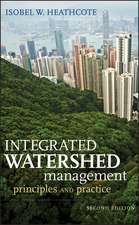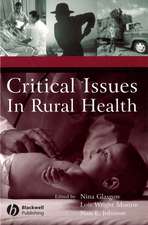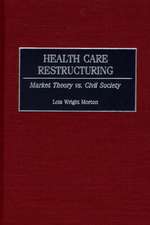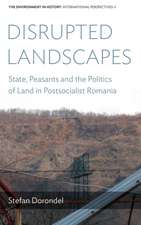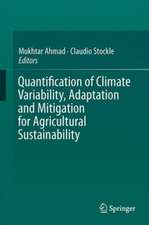Pathways for Getting to Better Water Quality: The Citizen Effect
Editat de Lois Wright Morton, Susan S. Brownen Limba Engleză Hardback – 6 dec 2010
| Toate formatele și edițiile | Preț | Express |
|---|---|---|
| Paperback (1) | 640.55 lei 6-8 săpt. | |
| Springer – 28 noi 2014 | 640.55 lei 6-8 săpt. | |
| Hardback (1) | 646.75 lei 6-8 săpt. | |
| Springer – 6 dec 2010 | 646.75 lei 6-8 săpt. |
Preț: 646.75 lei
Preț vechi: 760.88 lei
-15% Nou
Puncte Express: 970
Preț estimativ în valută:
123.75€ • 134.85$ • 104.28£
123.75€ • 134.85$ • 104.28£
Carte tipărită la comandă
Livrare economică 23 aprilie-07 mai
Preluare comenzi: 021 569.72.76
Specificații
ISBN-13: 9781441972811
ISBN-10: 1441972811
Pagini: 296
Ilustrații: XXIII, 273 p.
Dimensiuni: 155 x 235 x 28 mm
Greutate: 0.59 kg
Ediția:2011
Editura: Springer
Colecția Springer
Locul publicării:New York, NY, United States
ISBN-10: 1441972811
Pagini: 296
Ilustrații: XXIII, 273 p.
Dimensiuni: 155 x 235 x 28 mm
Greutate: 0.59 kg
Ediția:2011
Editura: Springer
Colecția Springer
Locul publicării:New York, NY, United States
Public țintă
Professional/practitionerCuprins
Section I: Pathways.- Pathways to Better Water Quality.- Citizen Involvement.- Shared Leadership for Watershed Management.- Relationships, Connections, Influence and Power.- Turning Conflict into Citizen Participation and Power.- The Language of Conservation.- Section II: The Data.- Measuring the Citizen Effect: What Does Good Citizen Involvement Look Like?.- Regional Water Quality Concern and Environmental Attitudes.- Communities of Interest and the Negotiation of Watershed Management.- Upstream, Downstream: Forging Rural-Urban Partnerships for Shared Water Governance in Central Kansas.- Local Champions Speak Out: Pennsylvania’s Community Watershed Organizations.- Community Watershed Planning: Vandalia, Missouri.- Force and Economic Sanctions as Watershed Solutions.- Cross-cultural Collaboration for Riparian Restoration on Tribal Lands in Kansas.- Getting to Performance-based Outcomes at the Watershed Level.- A Farmer Learning Circle: The Sugar Creek Partners, Ohio.- Farmer Decision Makers: What are They Thinking?.- Sustainability of Environmental Management - the Role of Technical Assistance as an Educational Program.- Building Citizen Capacity.- Index.
Textul de pe ultima copertă
The citizen effect refers to the many ways people engage science, technology and each other to identify and solve local watershed and water resource problems. The waters of the United States are sources of pride and prosperity, and they are intimately connected to the land. Citizens have both rights to use and responsibility for conserving, protecting and sustaining these public water resources. However, streams, rivers and lakes across the country are becoming degraded and in danger of losing their capacity to meet the needs of the human, plant and animal populations which depend on them. While many point sources of pollutants can be and have been addressed by regulation, nonpoint source pollution resulting from independent land use decisions across a broad landscape, especially in agriculture, remains a very difficult issue. The U.S. Environmental Protection Agency (EPA) in their National Water Quality Inventory Report to Congress singles out nonpoint source pollution as one of the biggest environmental challenges of the 21st century.There is increasing evidence that persistent nonpoint source water problems can be effectively addressed when public deliberation is linked to scientific knowledge and technical expertise. The subject of this book is human social interactions. We present qualitative and quantitative studies of citizens’ individual and collective efforts to work through the complex issues associated with watershed management. These results are intended to provide insight and practical knowledge that can be used by those who are working to bring change and long-lasting protection and improvement to U.S. waters.
Caracteristici
This book is about understanding and solving local problems of non-point source water pollution Readers are provided with a framework and empirical evidence to document the many ways people engage each other to make sense of and solve shared watershed concerns Examines the idea that citizens are an untapped resource when it comes to solving water quality problems





